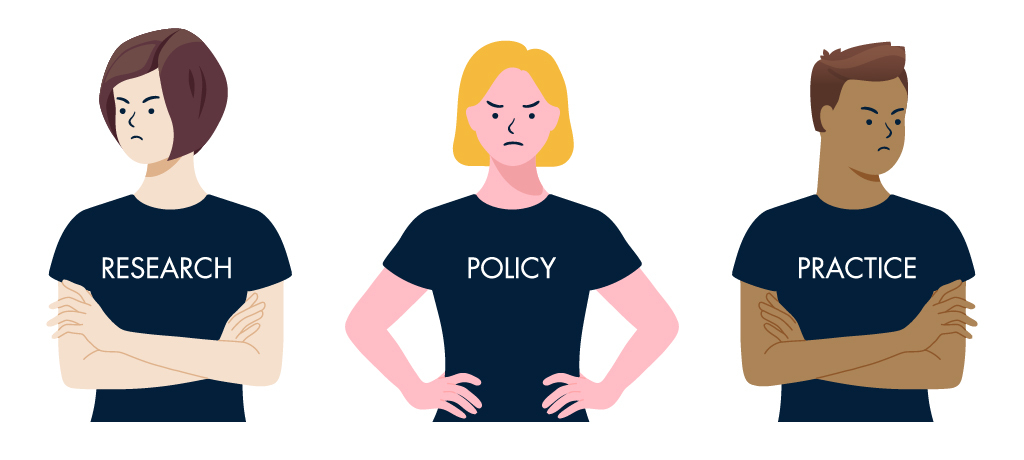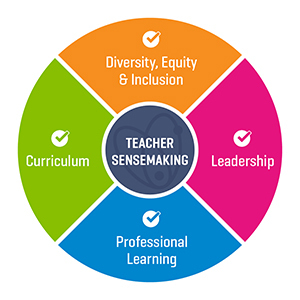Teacher Sensemaking
Contemporary Approaches in Science Education With All Students
By Okhee Lee, New York University; Tricia Shelton, NSTA; and Kate Soriano, NSTA
Posted on 2022-06-17
Disclaimer: The views expressed in this blog post are those of the author(s) and do not necessarily reflect the official position of the National Science Teaching Association (NSTA).
Before A Framework for K-12 Science Education (National Research Council, 2012) and the Next Generation Science Standards (NGSS; NGSS Lead States, 2013), research, policy, and practice did not work well together and, in some cases, even mistrusted each other. Research focused on conceptual work, such as project-based learning, problem-based learning, or place-based learning, using a limited number of science topics. Policy focused on science standards consisting primarily of science concepts to be tested. And practice did not see the relevance of research or policy for students in the classroom.
Following the Framework and the NGSS, there is now consensus among research, policy, and practice. The field is “speaking the same language” to achieve common goals.
Before

After

In this blog, we describe how contemporary approaches in science education based on the Framework and the NGSS “flip” traditional approaches. Both traditional and contemporary approaches address “What counts as science and science learning?” and “Who are science learners?” However, as shown in the figure below, how each approach addresses the two questions differs. Moreover, the shifts from traditional to contemporary approaches call for redefining “What is effective science instruction?” In describing these shifts, we focus specifically on what constitutes an instructional unit and lesson according to traditional and contemporary approaches.
Traditional Approaches in Science Education
Stretching back to the launch of Sputnik in 1957, scientists and science educators defined the knowledge to be taught in school science. Science learning traditionally involved the accumulation of discrete elements of science knowledge (i.e., what knowledge is; knowledge-as-given). This canonical science knowledge was often presented through science textbooks, meaning that literacy skills (reading and writing) were a precursor to learning science. Canonical science knowledge was confirmed by school science lab investigations.
Traditional approaches viewed students as receivers of science knowledge defined by scientists and science educators. School science was grounded in established bodies of knowledge in science disciplines. Traditional approaches resulted in only a small portion of students coming to understand and appreciate how science knowledge is connected to form science disciplines – an understanding that is essential to move on to science careers. However, science did not make sense to many students who did not come to see it as relevant to their lives or future careers.
An instructional unit was organized around a science topic in a science discipline. Then, the body of science knowledge on this topic was broken down into a list of science concepts. A unit addressed a science topic, and lessons addressed related science concepts on the topic. A lesson or a lesson plan was designed for one class period of 45-60 minutes. A unit made sense from the perspective of a science discipline in that it addressed related science concepts but not from the perspective of students who did not see the purpose that learning those science concepts served.
Contemporary Approaches in Science Education
Flipping traditional approaches, contemporary approaches place student agency at the center. In contemporary approaches, students engage in science and engineering to make sense of phenomena and problems as scientists and engineers do in their professional work (i.e., what knowledge does; knowledge-in-use). To make sense of phenomena and problems, students engage in three-dimensional learning by blending science and engineering practices, crosscutting concepts, and disciplinary core ideas and, over time, develop their science understanding coherently.
Flipping traditional approaches, contemporary approaches aim for “all standards, all students” (Lee et al. 2015). While traditional approaches only engaged select students in science learning, contemporary approaches place equity at the center. To promote sensemaking with all students, phenomena and problems should be compelling to all students, especially those who may not see science and engineering as relevant to their lives or future careers.
An instructional unit is organized around a phenomenon or problem paired with a question that drives student sensemaking (e.g., What happens to our garbage?) A lesson is what it takes for sensemaking of one aspect of the phenomenon or problem of the unit (e.g., what is that smell?). Over time, lessons build toward answering the question of the unit and making sense of the phenomenon or problem of the unit. Moreover, an instructional unit and its lessons can be fluid and porous across science and engineering disciplines. Phenomena and problems do not draw distinct boundaries, as they are not inherently discipline specific. Instead, a phenomenon or problem can be explained using core ideas across disciplines.
Closing
Since the publication of the Framework and the NGSS, NSTA has been serving as the hub to implement the vision of equitable science learning with all students. As NSTA has been working closely with science educators to support implementation across the nation, we have gained valuable insights in terms of their assets as well as their needs to understand and implement contemporary approaches in science education. Over time, we have used these insights to promote teacher sensemaking that makes student sensemaking a reality in the science classroom: (1) develop science instructional materials, (2) provide teacher professional learning opportunities, (3) create pathways to teacher leadership, and (4) use a wide range of digital media and platforms. Collectively, these four areas support our overarching goal of Diversity, Equity and Inclusion by equipping and empowering science educators to achieve “all standards, all students.” We will describe our efforts in supporting both student and teacher sensemaking in our five subsequent blogs.

Note: An example of a school district that promotes contemporary approaches in science education with a focus on multilingual learners is found in the blog by Borman, G., Ocol, T., & Lee, O. (2022), New York City Department of Education takes a systems approach to science education with multilingual learners.
References
Lee, O., E. Miller, and R. Januszyk (Eds.). 2015. NGSS for all students. Arlington, VA: National Science Teachers Association Press.
National Research Council. 2012. A framework for K–12 science education: Practices, crosscutting concepts, and core ideas. Washington, DC: National Academies Press.
Next Generation Science Standards Lead States. 2013. Next Generation Science Standards: For states, by states. Washington, DC: National Academies Press.
Advocacy NGSS Sensemaking Three-Dimensional Learning


